Max Banshees, 2022
This project looks at the character Farhad from Persian literature. Specifically, it looks at how his death and narrative significance has evolved as the story that he is a part of has been adapted to different cultures, time periods, and mediums.
Capturing that lineage of transformation through illustrations, typographical experiments, creation of patterns, arrangement of assorted writings, and web design has been the driving force behind this project.
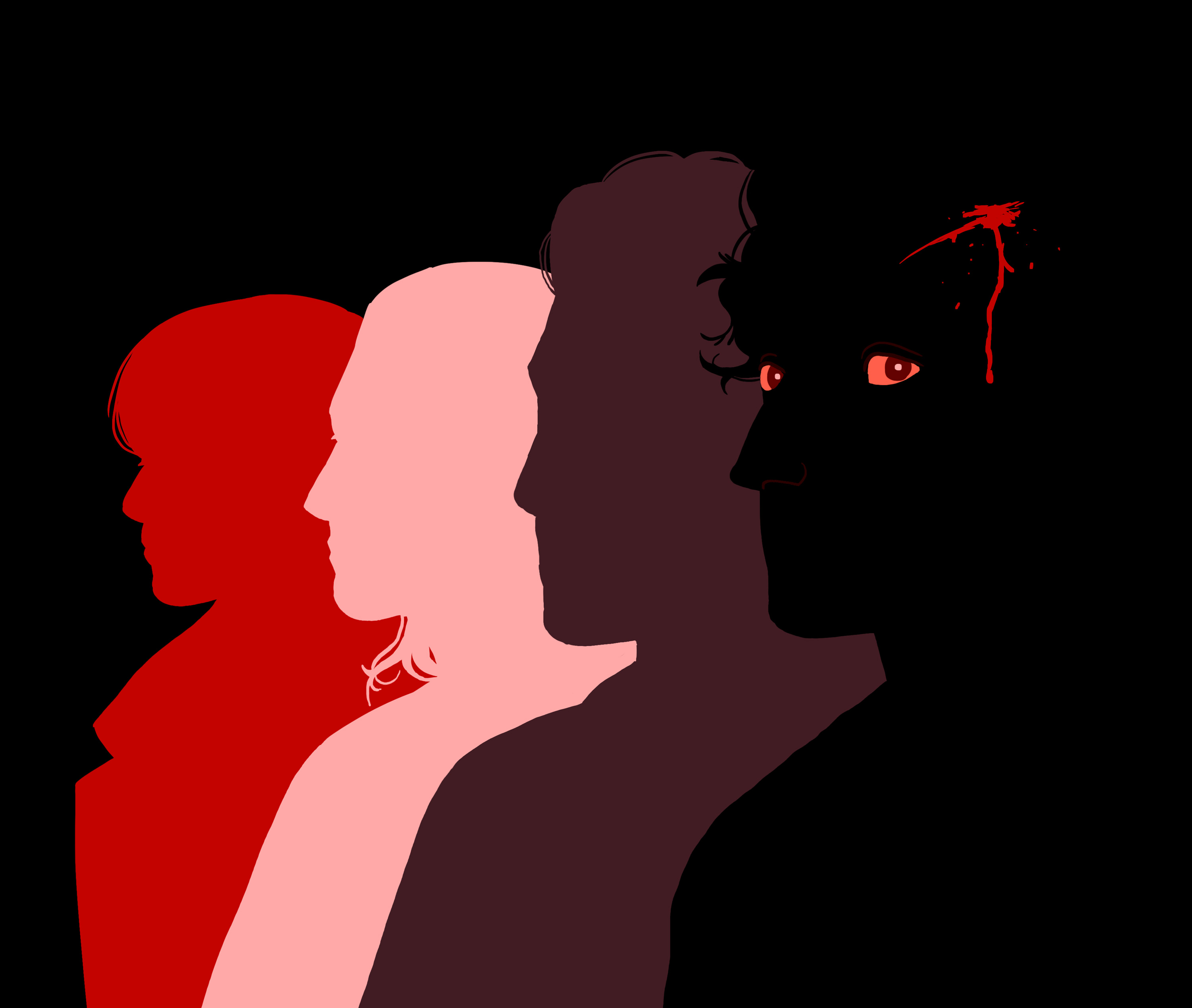
I first came to know about the tale of Farhad through the Russian videogame series Pathologic. In the game, a murdered architect is posthumously named after him.
The origins of this reference interested me, and I began the project by studying the literary basis for it. Specifically, I looked to how he was depicted in the Persian poet Nizami's collection of poems known as the Khamsa. I then bridged that with my knowledge of the character as he appears in Pathologic.
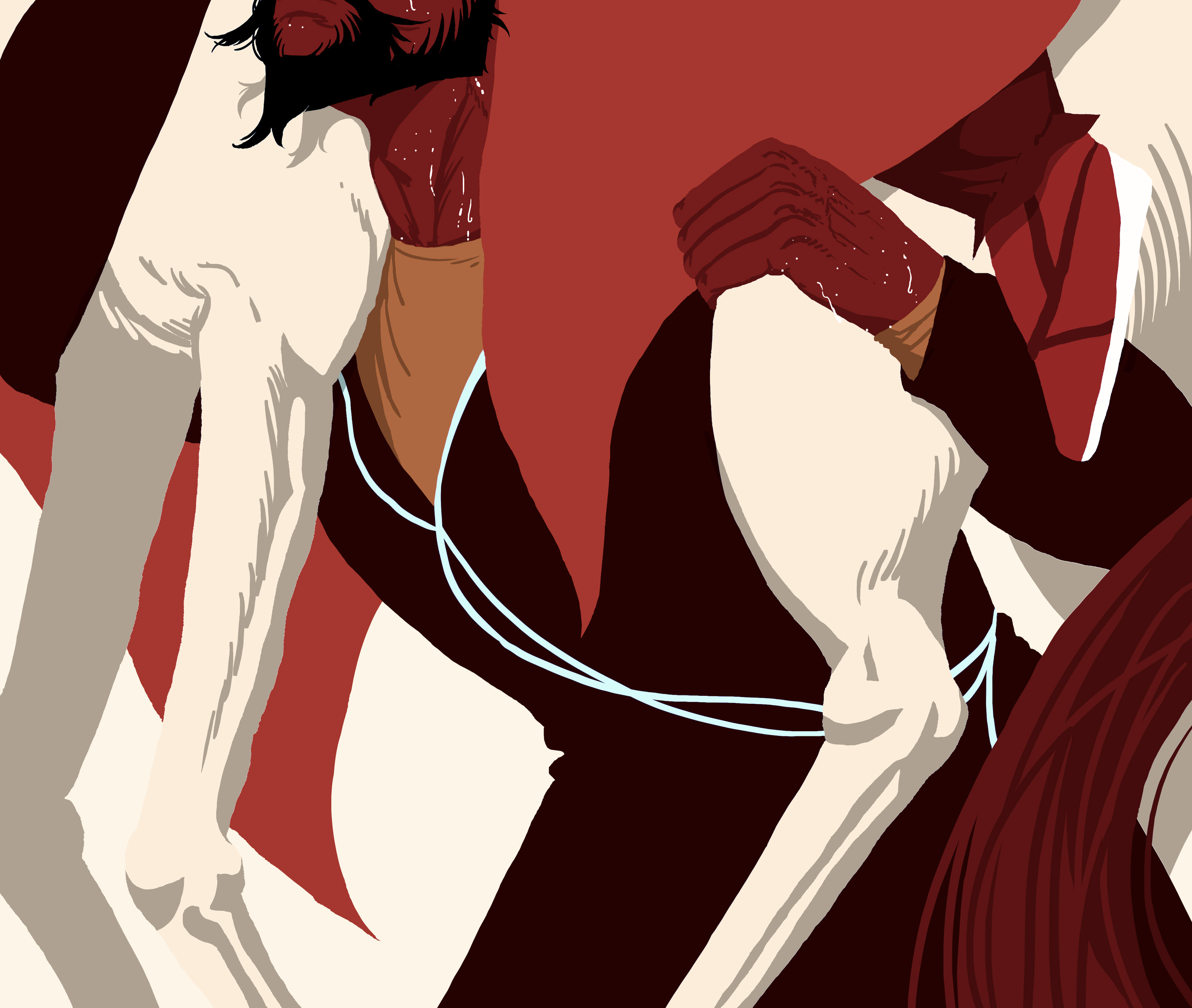
Farhad as he appears in Ferdowsi's Shahnameh predates the Farhad that appears in Nizami's Khamsa. However, I chose to focus on Nizami's poem, as it expands on the romantic and tragic elements of this character.
Mirror of the Invisible World was an invaluable resource for this portion of the project. The book contains an abridged translation of the Khamsa, as well as historical context for the author. It was published by the MET for the opening of the Islamic galleries in 1975.
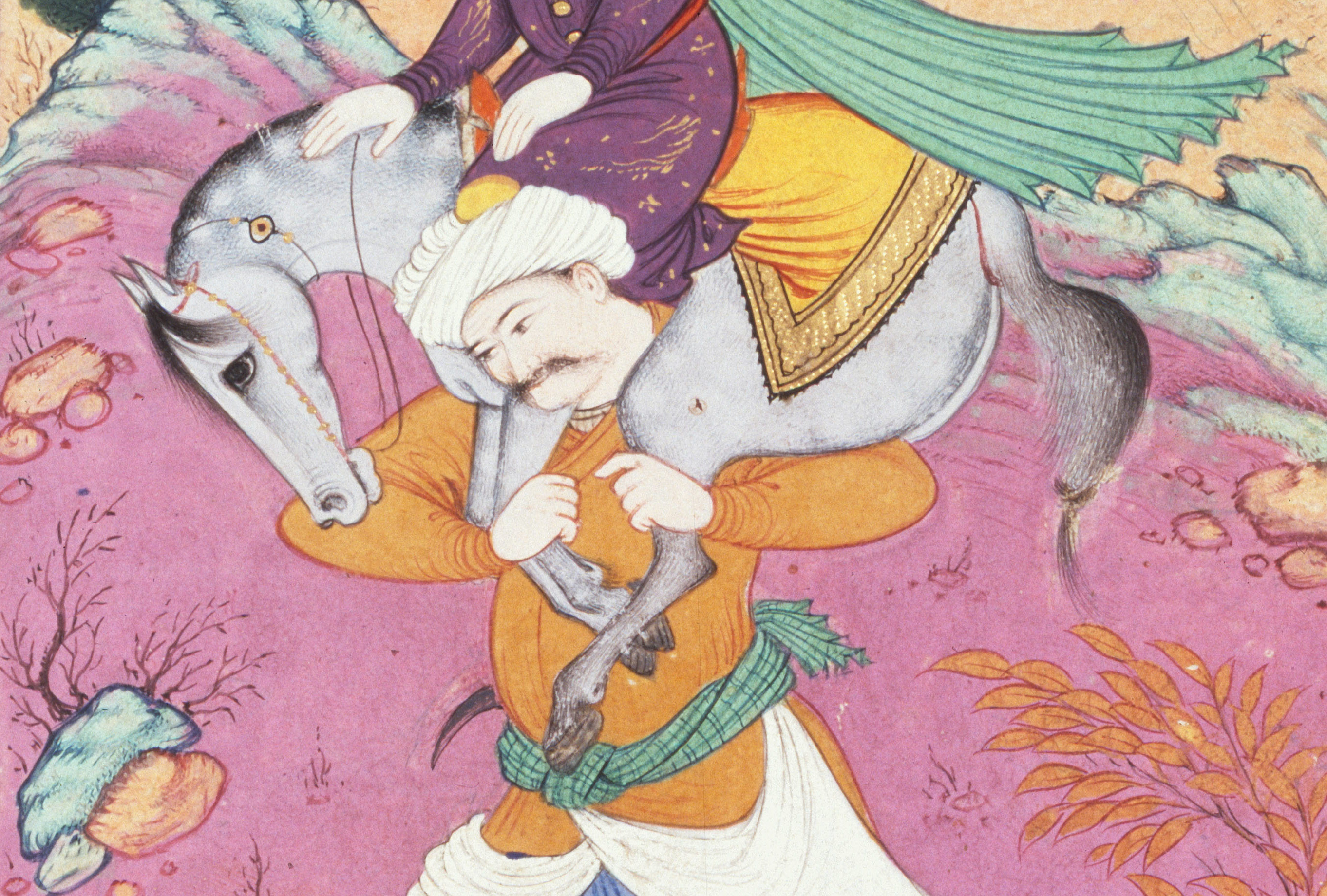
The scene I chose to depict for this section of the thesis is when Farhad carries the Princess Shirin and her exhausted horse down the mountain Bisotun, a mountain which he is carving in order to win the love of the princess. The impossible task was set by the protagonist and the Shirin's lover, King Khosrow. When the prince realizes Farhad is about to succeed, he tricks Farhad into committing suicide by telling him the princess has died.
In my illustration for this work, I chose to focus on the physical strain he must have been under, which is in contrast to the lighthearted nature with which this scene is usually depicted.
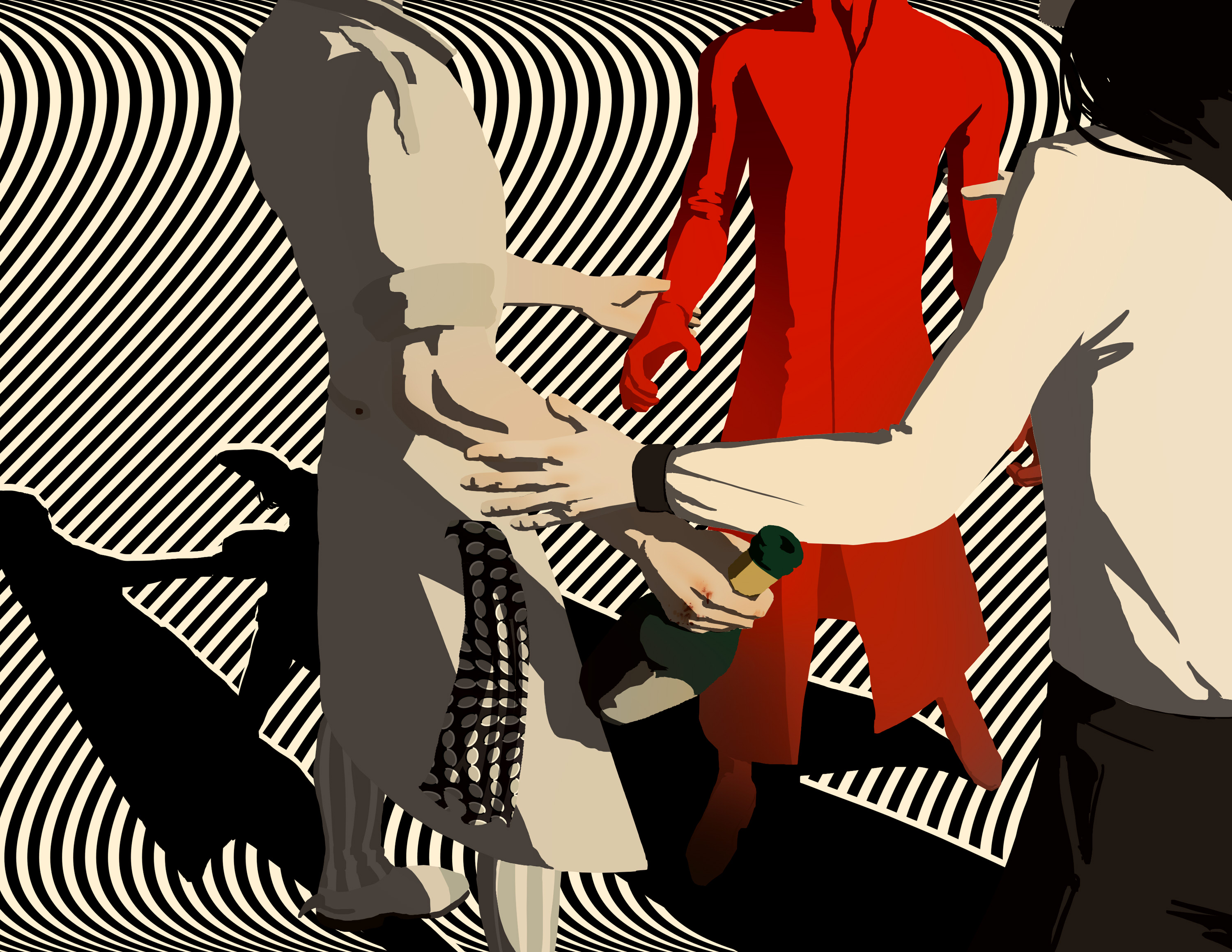
Between Nizami's take on Farhad, and Farhad as he appears in Pathologic, a great shift happens. His story is no longer a tragic romance in the literal sense— in fact, he is a part of story about artistic and architectural ambitions, though this too ends in his demise.
The Farhad of Pathologic— transliterated from Russian as Farkhad— is a character you can only meet through commentary on him, and the architectural works he has left behind.
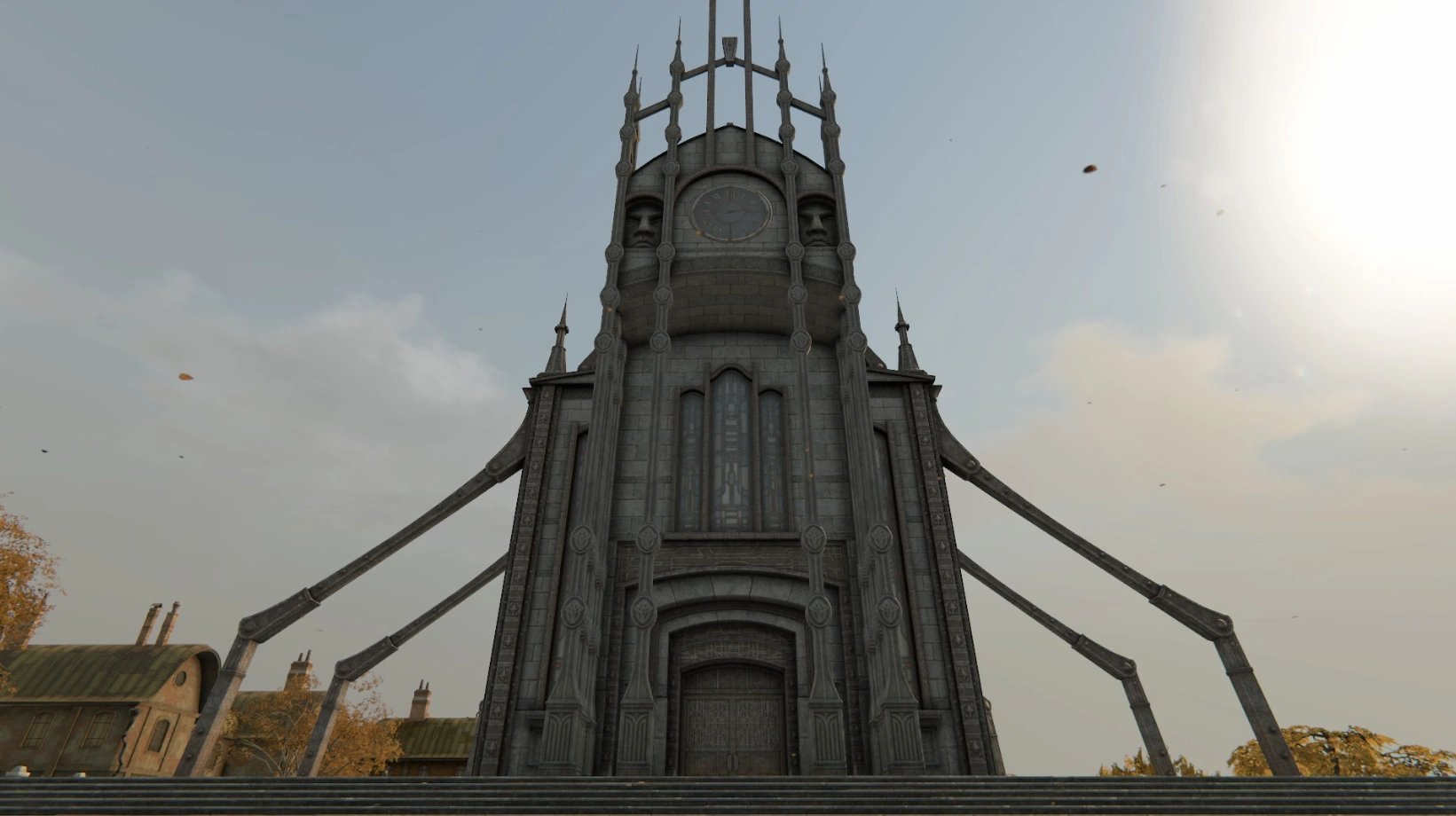
As we do not meet Farkhad, and the nature of his death is highly contested, I chose to depict his demise in a more symbolic way. The image was based off of the following quote:
Peter Stamatin: We had him buried under a fictitious name— a tribute to a celebrated architect of old, so there’s some consolation for him, at least… They say he fell down from a great height and broke his neck. That’s how he died. I’ve also heard a rumor that he got lethally intoxicated with bad twyrine…
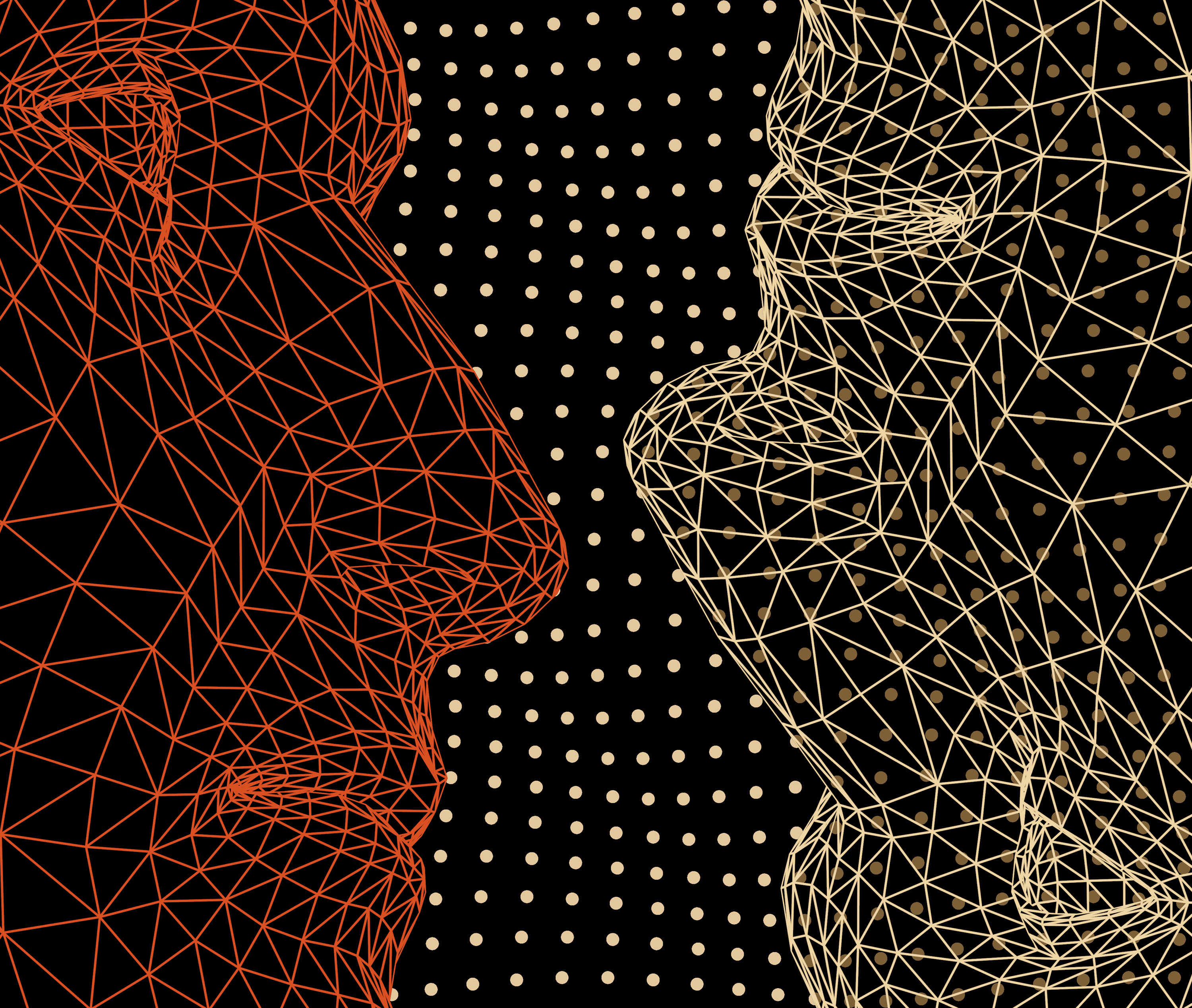
In the spirit of adaptation and re-adaptation, the fanwork Haematopoetry by Judas Salieri takes the events of Pathologic and shuffles them around in order to get a new perspective on an event.
We still don't get to see Farkhad, but instead of the character having met his demise years ago, he's been killed just a few hours before the start of the play— and his body is present in a chest in the very same room that the play takes place in.
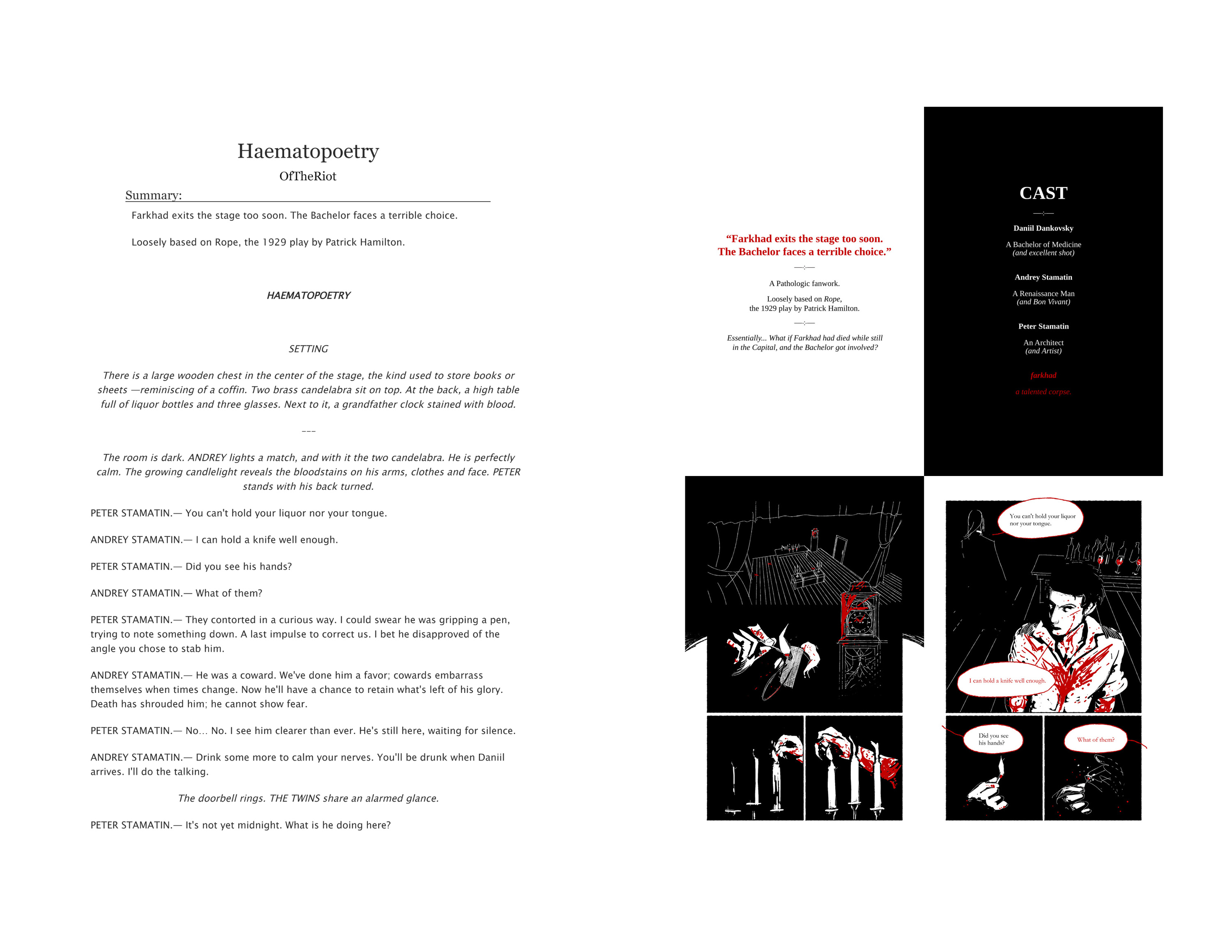
I took a different approach towards illustrating this section. I considered that Haematopoetry was not only a fanwork for Pathologic, concerning a character originally from Persian literature, but that it was also inspired by the 1929 play Rope by Patrick Hamilton.
It is, in essense, a story of a story of a story, but it still manages to garner new insights about the death of Farhad. I chose to depict this with a mirrored wireframe render of a figure. Farhad is no longer a person with a history or a future. Time has whittled this character down to his most essential purpose: his death.
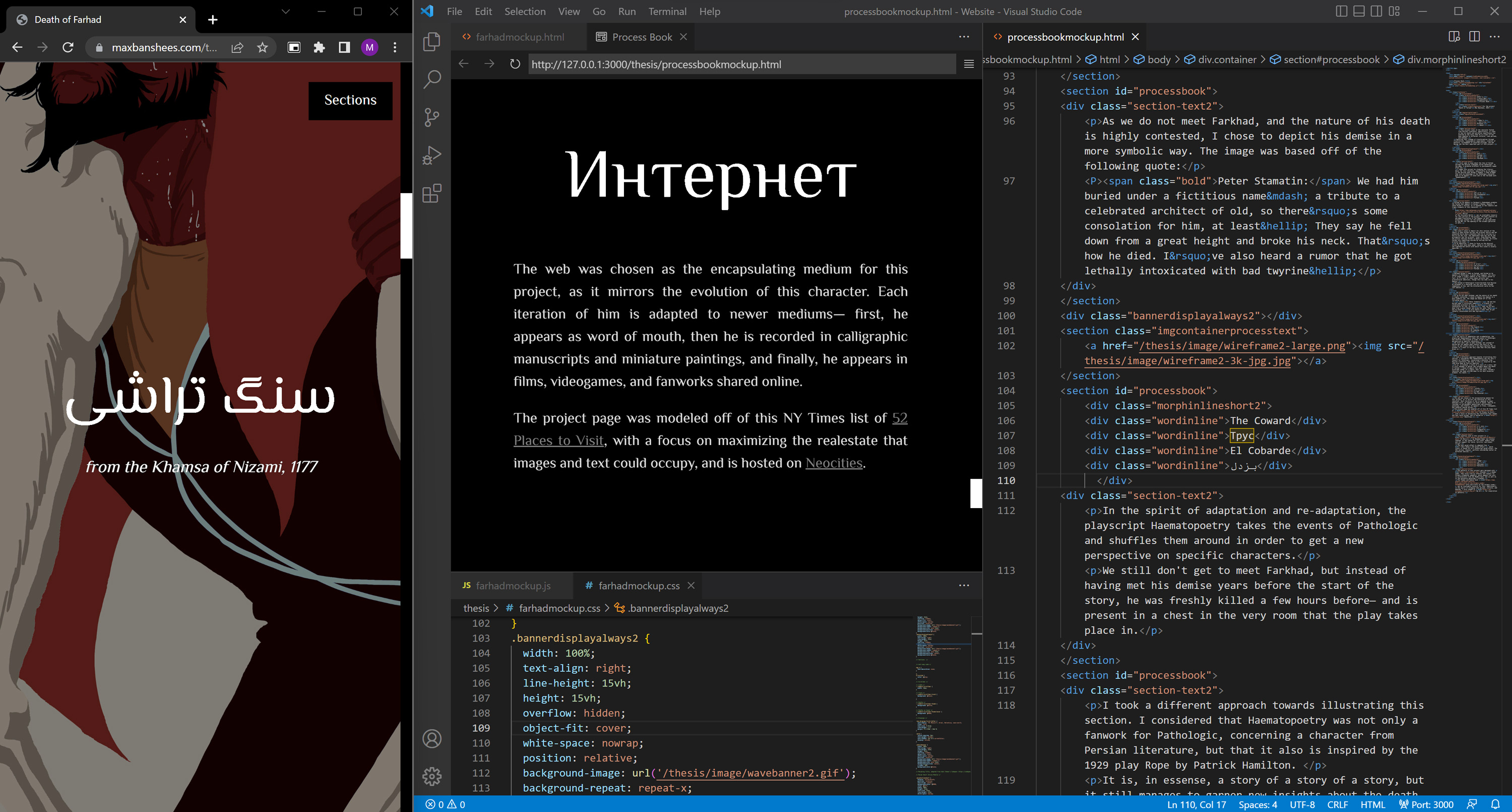
The web was chosen as the encapsulating medium for this project, as it mirrors the evolution of this character. Each iteration of him is adapted to newer mediums— first, he is recorded in manuscripts and miniature paintings, then in films, and finally in videogames and fanworks shared online.
The project page was modeled off of this NY Times list of 52 Places to Visit, with a focus on maximizing the realestate that images and text can occupy, and is hosted on Neocities.
Эль Мессири
El Messiri
The typeface used in this project is El Messiri by Mohamed Gaber and Jovanny Lemonad. It was chosen for its fresh, modern look, and its support for Latin, Cyrillic, and Arabic script.
The text morph effect is adapted from Amit Sheen's CSS morph effect, which itself is based off of a Javascript morph effect. The CSS version, however, performs consideraby better on different devices.
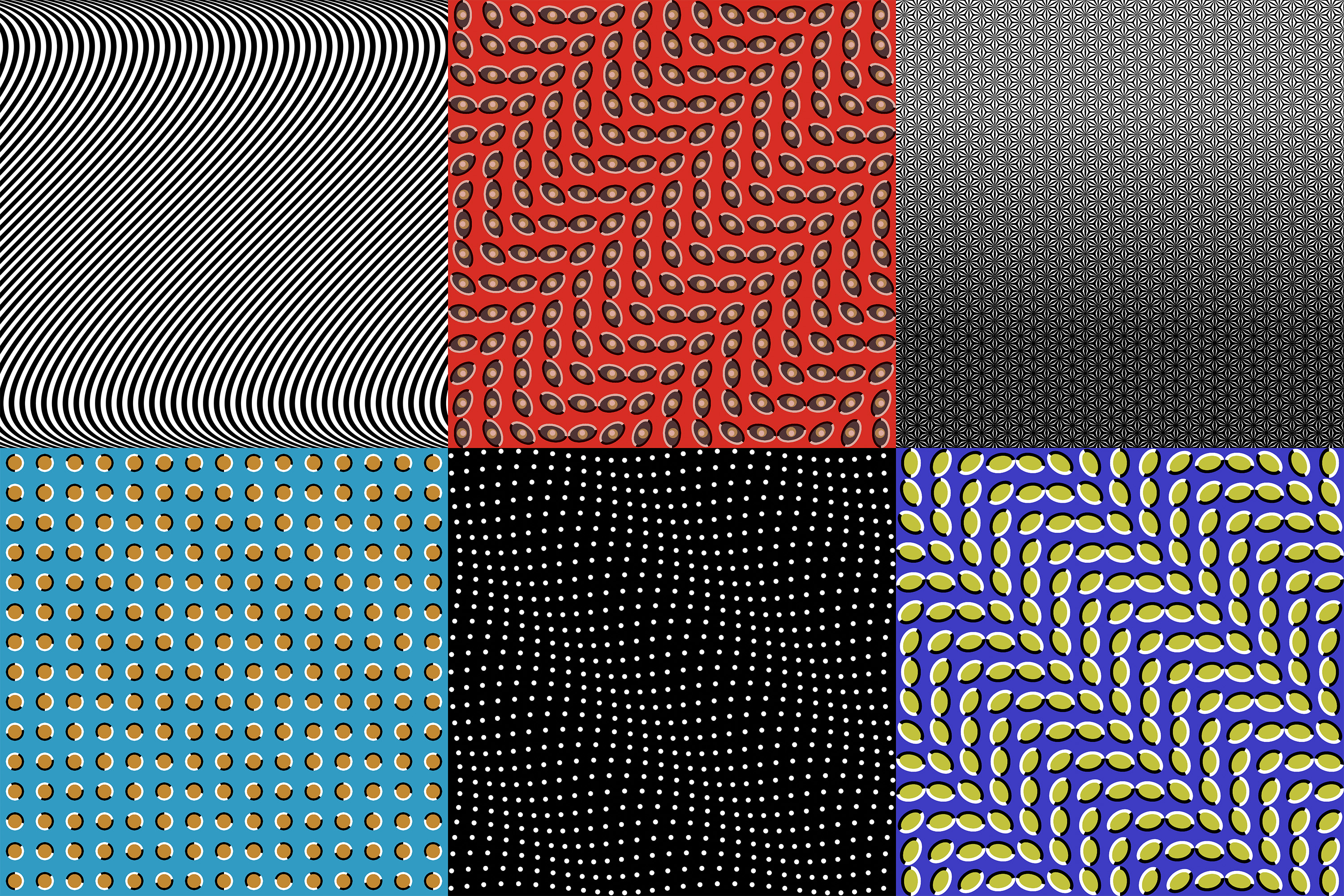
The patterns in this project were designed with Blender's shader nodes. They arose from my interest and respect for Islamic ornamental geometry, which appears not only in architecture from the Middle East, but as well as in the miniature paintings I studied.
The Thames and Hudson book Arts and Crafts of the Islamic Lands was an invaluable resource for this. Additionally, in the spirit of bridging time periods, cultures, and mediums, I also looked to Op Art for inspiration on patterns.
This project is a culmination— but not termination— of my artistic interest in the story of Farhad, as well as in the series Pathologic. It is also a stepping stone for further endeavors in illustration and design.
Many thanks to my Fall 2022 MassArt Illustration thesis professor Polly Becker for the guidance, to Fritz Klaetke and Jill Weber for the graphic design advice, to my family for the support, to my friends for the encouragement, and to you as the reader for taking the time to look through this project.
